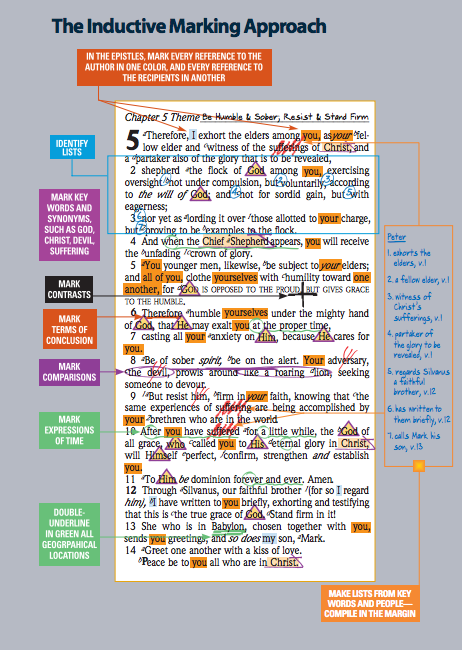Inductive Bible study is a natural approach to the bible, popular among many followers of Jesus. The approach focuses on the immediate context of a passage instead of relying on resources that were not available to the original audience. The main goal of inductive Bible study is to understand the Bible and apply it to everyday life. Inductive Bible study includes three basic steps, observation, interpretation, and application. Inductive Bible study focuses on understanding the Bible in its natural context, and can be used in a variety of ways.
An investigative way of studying the Bible
An inductive approach to Bible study involves interpreting a passage by looking for the larger context in which the text is written. To do this, we should examine related biblical passages to understand the context and words used. Then, we should apply the study to our lives, putting the biblical text to practical use. Inductive Bible study is habit-forming and can result in a reduction in anxiety and a greater capacity for love.
Inductive Bible study is a process of discovery, requiring personal involvement and prayerful observation. The goal is to provide the student with the tools necessary to fish for themselves in the Bible. The Bible is an incredibly remarkable book. Millions of copies are sold each year, yet it is one of the least-read books in history. With a little effort, this method can lead to greater understanding of God’s Word and help you walk away with practical application.
An approach that emphasizes the immediate context of a passage
Inductive Bible study emphasizes the immediate context or situation in which a text is written. Readers of the Bible are often quick to jump from the text to the application of what they have learned. Instead, Bauer and Traina encourage readers to observe, interpret, and apply a passage to the rest of the canon. Inductive Bible study also encourages readers to consider biblical passages in relation to other texts.
To succeed in this type of Bible study, students must commit to studying the text in a way that keeps them close to the Author. They must maintain a posture of prayer and seek a new light. Students are encouraged to make notes and mark significant passages, so they can study these passages later on. Inductive Bible study can also be used as a one-on-one Bible study. During one-on-one Bible study, students can use the same Bible as a reference book. They can also use a Bible to help others study the Bible.
A method that builds on basic reading skills
Inductive Bible study is an investigative method based on observation and interpretation of scripture. The goal is to find truth for yourself, rather than just memorizing facts. It builds confidence in the study of God’s Word. This method requires time, patience, and prayer to master. Here are some tips to help you start using inductive Bible study to better understand Scripture. Let’s explore each step in more detail.
First, start with the literal translation. Second, be careful when you’re reading versions that are mostly paraphrased, as they usually restate the passages but attempt to give them new meaning. You’ll find the most meaning when you start reading literal versions. However, paraphrased versions aren’t good enough for inductive Bible study. They often miss the main idea, and therefore may be misleading.
An approach that avoids relying on resources that aren’t available to the original audience
Rather than relying on the original audience for context, inductive Bible study works by answering questions from the text. The students use context to define terms and develop theories. The study also takes into account the time, culture, and historical context to understand the perspective of the author or audience. The students avoid relying on resources that weren’t available to the original audience.
The goal of inductive Bible study is to move from an overall overview to the details of a passage. This is done by following a process of steps that help the interpreter handle the text and get insight from the Bible. Many Bible readers skim through three chapters a day. While this may be helpful, it is not the best way to study Scripture. It is like filling yourself up with butter and dinner rolls, but staying on a milk diet.

